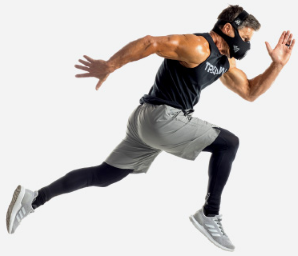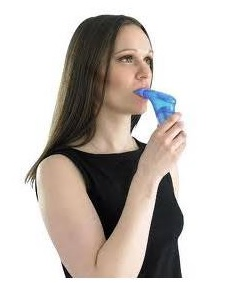Hello Anoop,
Good article! So does it mean, the mask could improve performance since the study didn’t measure performance? Most articles online say the mask cannot work but it seems like it does lower oxygen levels. Am I right?

February 02 2019
You might have seen folks training in the gym or outside wearing these masks. Admittedly, they do look cool and high-tech, but do they have any benefits?

The makers claim better fitness and improved performance in a wide range of activities
Performance: Quoting from their website:
“Training Mask is used to improve your breathing power and technique so that you can perform better in a broad range of physical activities such as running, weight lifting, sports, yoga, and core exercises. Performance breathing with Training Mask has multiple benefits that lead to improved athletic performance and better fitness (www.Trainingmask.com).”
Image Credit: Trainingmask.com
According to the website:
“Training Mask reproduces hypoxia at a fraction of the cost of multi-thousand-dollar altitude training chambers, or expensive trips to the Rocky Mountains. “The Training Mask Effect” is a proprietary combination of Resisted Breathing & Hypoxic Training”
Basically, the mask ‘works’ by mimicking high-altitude training and by training your breathing muscles.
In their website, they have referenced 2 studies that both gives the impression that these mask do work. But do they?

Aerobic Exercise Study 1: In study 1, twenty-four moderately trained subjects were divided into a training mask group and a control group and trained on a cycle ergometer for 6 weeks. Two variables (unlike the 4 shown on the site) showed significant difference (out of 14 variables measured).
Weight Training Study 2: In study 2, they showed that weight training increased growth hormone and muscle thickness in the hypoxia group (low oxygen group).
Bottom line - none of the studies cited support an improvement in athletic performance as claimed.
Altitude training mechanism: At high altitudes, the thinning of air leads to a lack of oxygen (called hypoxia)that triggers the release the hormone Erythropoietin. This hormone increases our red blood cells (RBC). And since 95% of the oxygen in our body is carried by RBC’s, the increase in RBC means greater oxygen carrying capacity and better performance.
Mask vs Altitude training: The mask simulates altitude training by reducing the air you can breathe. So the company is right to claim the mask leads to a hypoxic environment. However, the problem here is the degree of hypoxia needed to achieve an increase in RBC’s. In the first study, the oxygen levels in the mask group decreased by 2%. On the other hand, in altitude training, the reduction in oxygen levels is as high as 40%. Hence the reason the aerobic study didn’t observe an increase in RBC’s with the mask training. And importantly, the increase in RBC seen in altitude training requires hypoxia for 12-22 hour/day, which requires athletes to live at high altitudes for weeks. In short, unless you are Batman and wearing the mask the whole day, I just don’t see the mask improving your red blood cell count.
Live High, Train Low: Due to the low oxygen levels at high altitude, training intensity suffers. To overcome this problem, athletes live at a higher altitude to improve their blood RBC’s and train at lower altitude to maintain their intensity. This lowering of workout intensity is a problem with mask training. In fact, one weight training study has shown to decrease performance or the repetitions performed during squat (3-4 repetitions). Another one showed significant decrease in alertness and focus for task in the mask group.

Respiratory muscle training (RMT): RMT involves training your respiratory (inspiratory or/and expiratory) muscles by breathing into a pressure device for 15-30 minutes, 3-4 times per week. Apparently, unlike the mask, a number of meta-analysis (group of studies) have shown RMT to enhance performance (Timed trials, Endurance time) in non-athletes and athletes from multiple sports (rowing, running, swimming, cycling, Intermittent sprint sports). And since you re not using this during training, it doesn’t negatively affect your training either.
Reference 1, Reference 2, Reference 3, Reference 4, Reference 5
Hello Anoop,
Good article! So does it mean, the mask could improve performance since the study didn’t measure performance? Most articles online say the mask cannot work but it seems like it does lower oxygen levels. Am I right?
Anoop | Sat February 23, 2019
Hello Rahul,
Thank you for the comment.
Exactly! Absence of evidence doesn’t mean evidence of absence. A pilot study did show some performance improvements, but too small a study to say anything. And the current study didn’t measure performance.
You are right. It does lower oxygen levels but not to the levels (and not enough duration) that may be required. So they are partially right to call it “elevation mask”.
© 2008 - 2025 | Exercise Biology. All rights reserved.